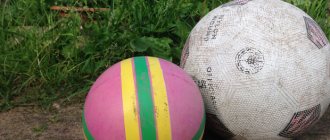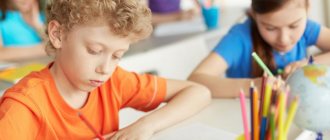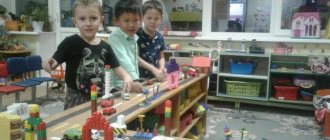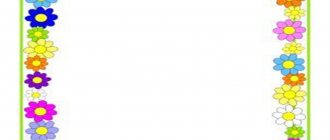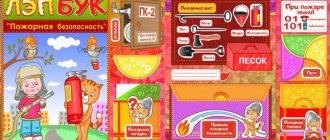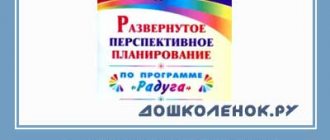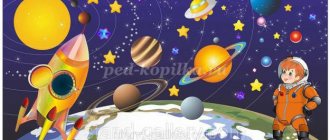National-regional component calendar-thematic planning (middle group) on the topic
1.To form in children an idea of the beauty and diversity of their native nature.2.Tell about changes in nature in autumn, signs of autumn.
3. Form basic ideas about the animals of the Siberian taiga.
Organize observation of birds flying to the kindergarten site.
1. Continue to introduce children to the trees and shrubs in the kindergarten area, with their changes in the fall.
2. Introduce children to the rules of safe behavior in nature (in the kindergarten area).
1. Reinforce the rules of behavior in kindergarten.
2.Teach verbal communication in the kindergarten team and family
3. Introduce children to table manners in kindergarten and family.
Expand and deepen children's knowledge about the city of Sharypovo, its history, and attractions. Introduce the symbols of your hometown.
Develop moral and patriotic qualities; pride in their small homeland, instill respect for the work of Sharypovo residents.
.
Expand children's knowledge about late autumn in Siberia.
Develop the ability to establish simple connections between living and inanimate natural phenomena
Expand ideas about animals, birds, their adaptation in Siberian conditions.
Give the concept of “architecture”, “sculpture”.
Talk about when and how they began to build houses (huts, towers, etc.) in Rus', introduce the characteristic features of residential buildings in Siberia.
Develop an appreciation for your hometown through exploring architectural landmarks
1. Expand children’s understanding of the signs of winter in our city.
2. Introduce children to folk signs in Rus'
3. Reinforce the rules of safe behavior at the ice town
1.Continue to introduce children to domestic animals that are found in our city and rural areas.
2. Continue to introduce children to wild animals that are found in the forests of our region; introduce them to their appearance and habits.
1. Introduce children to places for winter entertainment in our city (ice town, skating rink, etc.).
2. Teach children to build simple buildings from snow on the kindergarten site.
1. Introduce children to the paraphernalia and traditions of celebrating the New Year holiday in Russia.
2. Involve children in decorating the kindergarten group for the holiday and making New Year’s decorations.
1. Instill a love for oral folk art through familiarity with Russian folk tales;
2. Introduce children to “outdated” words previously used in Rus' (bast shoes, caftan, etc.)
1.To consolidate children’s knowledge about their kindergarten and its traditions
2.Continue to introduce the kindergarten staff
3. Teach children to communicate kindly with peers in a group; suggest how you can congratulate your friend or your kindergarten employees on the holiday.
Introduce children to household items that are found at home, establish cause-and-effect relationships between the labor process in everyday life and the object that facilitates it.
Expand children's understanding of the properties of materials of objects located in a group room, their quality in the process of experimental activities.
Expand and clarify children's ideas about the Russian Army, about the soldiers who protect our Motherland.
Pay attention to the personal and business qualities of people in these professions. Foster respect for working people, their activities and their results.
Continue to introduce various male professions (male professions in the family).
Expand and enrich ideas about labor actions, tools, and labor results.
Continue work to create interest in the folklore of Siberia.
Introduce books designed by Yu. Vasnetsov, E. Rachev, E. Charushin.
Learn to distinguish between genres and types of art (poetry, prose, riddles)
Introduce the library as a storage center for books created by writers and poets
1. Form an idea of the child’s growth and development, his past, present and future
2. To form children’s ideas about rights (to play, friendly relationships, etc.) and responsibilities (in kindergarten, at home, on the street, etc.)
1. Introduce children to indoor plants that grow in the kindergarten group (impatiens, ficus, geranium, chlorophytum, begonia, violet, etc.).
2. Expand children’s understanding of the benefits of indoor plants for our body.
1. Learn to identify signs of spring in the kindergarten area (grass has appeared, buds have swelled on the trees, snowdrops have appeared).
2. Expand children’s understanding of the work carried out in the spring in gardens and vegetable gardens (dachas).
1.Tell children about the most beautiful places in your hometown and its attractions.
2.Continue to introduce children to cultural phenomena in our city and their attributes; people working in them.
Introduce traditions and customs in Rus'.
Introduce children to Russian folk costume.
Develop an understanding of the need to take care of your health, protect it, learn to preserve and strengthen it.
Instill a love of physical exercise, hardening, healthy and wholesome food
Involve parents in instilling healthy lifestyle values in their children. Visit sports and recreation complexes in your hometown (Sports complex “Nadezhda”, “Siberia”, health complex “Summer”, etc.).
Give children knowledge about the Russian holiday - Cosmonautics Day.
To form children's ideas about the diversity of space.
Expand children's understanding of the first astronaut's flight into space.
Instill love for the native land, the planet, and the heroes of space exploration. To cultivate respect for the astronaut profession and a sense of patriotism.
Involve parents in joint activities.
Systematize and deepen children’s knowledge about the characteristic signs of spring in their hometown, region, and the vast expanses of Siberia.
To teach to understand the connections between inanimate natural phenomena and seasonal types of labor.
Evoke aesthetic experiences from the spring awakening of nature, see the beauty of your native land.
Develop skills for safe behavior in nature in spring.
To develop knowledge, skills and habits of safe behavior at home and in nature.
Teach children to dial the emergency phone number and clearly state their home address.
1. Contribute to the education of moral and patriotic feelings for our small homeland and war veterans.
2. Foster respect and gratitude for all veterans of our city.
3.Give an idea that the names of the heroes who died during the Great Patriotic War are immortalized on slabs in Victory Park.
1. Enrich children’s understanding of gardening and field work. Planting seedlings and sowing seeds.
2. Teach children to grow seedlings for a vegetable garden on the territory of our kindergarten.
3. Expand ideas about the professions of people working in agriculture in the Sharypovsky district
1Formation of the basics of safe behavior for preschoolers at home, in a group: introduce objects that require careful handling.
2. Formation of the foundations for safe behavior of preschool children in nature: introduce children to poisonous plants and insects in the kindergarten area, teach children the rules of behavior on hot summer days,
1. Formation of the foundations of safe behavior “If you are alone at home.”
2. Formation of the basics of safe behavior on the roads of the streets of your city: reinforce the rules of the road, consolidate children’s knowledge of the operation of traffic lights (red and green signals), introduce them to the purpose of the yellow signal.
Card index of games - conversations with the regional component card index
Card index of games - conversations with a regional component
" My address…"
Goal: to develop the ability and knowledge of children to name their home address, village, street.
Material: ball
Progress of the game: everyone stands in a circle, the teacher passes the ball to the child and says: I live in the village ......”, the child answers and passes the ball to the neighbor, etc.
"Our kindergarten."
Goal: to consolidate children's knowledge about kindergarten, about kindergarten workers... What duties do they perform. Where is the group, dining room, etc. located? .To consolidate the ability to navigate according to a plan in space
Material: photographs and illustrations of the kindergarten, kindergarten workers.
Progress of the game: From photographs and illustrations, children learn and talk about the kindergarten workers.
“Our country.” Goal: To identify children’s knowledge about our Motherland, its capital
Material:. illustrations, photographs
Progress of the game: the teacher shows illustrations and pictures, asks questions.
“Small Motherland”. Purpose: To reveal children’s knowledge about their Small Motherland, about the history of our village, monuments and attractions Material: illustrations, photographs.
Progress of the game: the teacher shows illustrations and pictures, asks questions.
“Tell about your family” Goal: To form an idea of yourself as a family member. Show the importance of family in a person’s life. Develop a desire to talk about your family members, be proud of them, love them. Material: Photo album, compiled together with parents with family photographs with a family tree
"Find the flag of the Chelyabinsk region"
Goal: to help consolidate knowledge of the flag of your country, to consolidate the main colors of the flag, what do they mean?
Material ;pictures depicting different flags
Progress of the game: among the proposed flags, find the one you need
"Noble Deeds"
Goal: To cultivate in children the desire to do things for the sake of other people. To form an understanding that we call an action not only heroism, but also any good deed for the sake of another person.
Material: ball, pictures and illustrations depicting noble deeds.
Progress of the game: Children are asked to list noble deeds towards girls (women) and boys (men).
"Polite words"
Goal: To instill in children a culture of behavior, politeness, respect for each other, and a desire to help each other.
Material: plot pictures depicting different situations: a child pushed another, a child picked up a fallen thing, a child feels sorry for another child, etc.
Progress of the game. The teacher shows the card and asks the child to tell him what is shown.
"City Trip"
Goal: to introduce you to your hometown, its sights, and cultural monuments.
Material: album of photographs of your hometown, illustrations and postcards depicting city attractions
Progress of the game: The teacher shows the children photographs of the city’s attractions.
“Where is the monument?”
Goal: introduce children to monuments, teach them to navigate their hometown
Material: images of monuments
Progress of the game: The teacher shows the children images of monuments and asks them to tell where this monument is installed.
"Name who"
Purpose: to introduce children to the chapter.
Material: portrait
Progress of the game: The teacher shows the portrait and names who is depicted.
"Our village."
Goal: To consolidate children’s knowledge about their village, about the buildings built in the immediate surroundings of the kindergarten
Material: photographs and illustrations
Progress of work: From photographs and illustrations, children learn and talk about their village, about the buildings built in the immediate surroundings of the kindergarten
"My parents' names are..."
Goal: We consolidate knowledge of the first and patronymic names of parents, grandparents...
Material: family photo albums
Progress of the game: children, passing the ball to each other, quickly name the last name, first name, and patronymic of their mother and father.
"Yesterday Today"
Goal: to develop a sense of time in children.
Progress of the game: The adult invites the children, after listening to the sentences, to determine what time it concerns (present or past). If it is the past, then the children point with their hands behind them - it was once upon a time, but if the sentence concerns the present, then the children shrug their hands.
"Journey to Planet Earth"
Goal: To consolidate children's knowledge that the Earth is a spherical planet (using a globe). Show what movements the Earth makes (rotation around itself, around the Sun). Help children find water on the globe. Cultivate in children an interest in studying the Earth on which we live - as a planet.
Material: globe, world maps, pictures and illustrations of the planet.
“Find out who it is by the description”
Goal: to consolidate children's knowledge of the animal world of their native land. Instill love for the Native land, for the Motherland
Material: Pictures and illustrations depicting the animal world.
Progress of the game: The teacher describes the animal, the children guess
"Who has what house"
Goal: to consolidate children's knowledge of the animal world of their native land. Explain that animals also have the right to housing and inviolability of their home
Material: pictures and illustrations depicting animal homes.
Progress of the game: The bear has a den
Squirrel - hollow
“Which tree is the leaf from?”
Goal: to consolidate children’s knowledge about the nature of their native land, to consolidate the ability to form relative adjectives (birch - birch, oak - oak, etc.)
Material: Pictures and illustrations of trees and shrubs and leaves
Progress of the game: The teacher shows pictures depicting a leaf, then a tree.
"Green Pharmacy"
Goal: to consolidate children’s knowledge about medicinal plants of their native land; about their correct use for medicinal purposes.
Material: herbarium, card index of medicinal herbs
Progress of the game: The teacher shows a picture of a medicinal herb, the children guess. Tells about its healing properties
"Red Book "
Purpose: to introduce the “Red Book”. Instill love for the homeland, native land, a sense of responsibility
Material: illustrations “The Red Book”
Progress of the game: The teacher shows
a picture depicting rare animals and plants.
“What is the house built from?”
Goal: to improve knowledge of building materials, what a person’s home is made of, the ability to think logically, to consolidate the ability to form an adjective.
Material: Image of different human dwellings
Game progress: glass-glass,
Stone-stone…..
"Residential - Non-Residential"
Goal: to consolidate children’s knowledge that buildings are residential and non-residential. People live in residential buildings; in non-residential areas there are organizations, utility rooms, etc.
Material: pictures and illustrations depicting different buildings
Progress of the game: The teacher offers to determine residential or non-residential premises
The house is residential, the store is non-residential.....
"Call me kindly"
Goal: to improve children’s speech as a means of communication, to cultivate friendly relationships. Strengthen the ability to form diminutive words. introduce different names.
Progress of the game: Sergey – Seryozhenka, Olya-Olenka,….
" I love… "
Goal: to cultivate a respectful, caring attitude towards loved ones, towards each other, develops communication skills
Progress of the game: The presenter tells the children: “Each of us loves something or someone, all people have this feeling. I love my family, my job, I love you. Tell us who or what you love.” Children talk about their feelings and affections.
“Choose an outfit for the doll”
Goal: to introduce national clothing, instill interest in national culture, love for the Motherland, Native land
Material: doll, national costumes for the doll, pictures and illustrations depicting folk costumes"
Progress of the game Children dress the doll in national clothes
"The World of Objects"
Goal: to generalize children’s understanding that in the world around us many objects are made by man from materials of natural or artificial origin (using various materials, a person studies and uses their properties). Foster cognitive activity. Strengthen the ability to form adjectives.
Material: Pictures and images of household items
Progress of the game: cast iron - cast iron, wood - wood......
"Put the pattern together."
Goal: to introduce children to folk crafts, to instill interest in Kazakh traditions, to teach them to recognize and distinguish different crafts.
Material: cut pictures with images of folk crafts
Progress of the game Children collect pictures from cut fragments.
“On land, in the sky, on water, under water (transport)”
Goal: Improving the grammatical structure of speech, consolidating prepositions in speech.
Material: pictures of transport
Progress of the game: The teacher asks the children to name the small pictures, and then find a place for each of them in the big picture and make
offer
“What holidays do you know?”
Goal: To develop children's intelligence, memory, consolidate knowledge about holidays (folk, state, religious) and reinforce rules of behavior in public places.
Material: pictures and illustrations depicting holidays, postcards for various holidays.
Progress of the game The teacher begins a story about the fact that there are different holidays, shows cards and postcards. Offers to choose a card with a holiday, and a themed card for it.
"Human Dwelling"
Goal: To consolidate children’s knowledge about human housing, about what they are made of, to instill love for their home, the Motherland,.
Material: pictures and illustrations depicting a person’s home
Progress of the game The teacher begins the story about where the person lives, that there are different types of housing - yaranga, hut, hut....
On land, in the sky, on water, under water (animal world)"
Goal: Improving the grammatical structure of speech, consolidating prepositions in speech.
Material: pictures of the animal world
Progress of the game: The teacher asks the children to name the small pictures, and then find a place for each of them in the big picture and make a sentence
“Who needs what for work?”
Goal: To develop the ability of logical thinking and memory. To consolidate knowledge about people’s professions. Card material depicting people of different professions.
Progress of the game The cook is a ladle.
"Who's doing what?"
Goal: to develop the skill of selecting verbs to nouns. Develop speech, logical thinking, memory
Material: cards with images of people of different professions. Game progress: Cook - cooks, fries, etc.
"Nature and Man"
Goal: to consolidate children’s knowledge about what is created by man and what nature gives to man. Develop skills of caring for nature
Material: pictures and illustrations on the topic.
Progress of the game: The teacher conducts a conversation and offers to tell what is made by man, and what by nature, and how man uses nature to make people live better.
MAGAZINE Preschooler.RF
DIDACTIC GAMES WITH A REGIONAL COMPONENT TO FAMILIARIZE SENIOR PRESCHOOL CHILDREN WITH THE NATIVE LAND.L.M. Bukhalina, teacher, MBDOU d/s No. 85 Belgorod region, Belgorod
The implementation of the regional component is the most important part of the content of preschool education. The regional component reflects the uniqueness of culture, history, and nature that corresponds to a particular region and at the same time confirms that it belongs to the all-Russian culture, history, and nature. Thus, the regional component in preschool education contributes to the formation in the child of a feeling of love for the Motherland, fosters an emotionally positive attitude towards the places where he was born and lives; develops the ability to see and understand the beauty of the surrounding life; a desire to learn more about the features of nature and the history of their native land. [3]
In preschool age, great importance for the mental development, moral, patriotic and aesthetic education of preschoolers is given to the leading type of children's activity - play. It is the didactic game that is a multifaceted, complex pedagogical phenomenon: it is a gaming method of teaching preschool children, a form of education, an independent gaming activity, and a means of comprehensive education of the child’s personality. The essence of a didactic game is that children solve mental problems presented to them in an entertaining way, and find solutions themselves, while overcoming certain difficulties. The child perceives a mental task as a practical, playful one, this increases his cognitive activity [2].
Taking into account the modern requirements of the Federal State Educational Standard, the use of didactic games with a regional component is aimed at achieving certain objectives:
- formation in preschoolers of a holistic picture of the world based on local history;
- familiarization with the traditions of the Belgorod region, with the traditions of Russia, with the traditions of the family;
- the formation of moral qualities, a sense of patriotism, a tolerant attitude towards all people inhabiting our multinational Belgorod region and Russia;
- introducing children to the study of their native land through elements of research and project activities together with adults; fostering a caring attitude towards natural objects and the results of people’s labor in the region and in Russia as a whole[1].
When organizing educational work with children to familiarize preschoolers with the history and culture of their native land, educational and developmental play acts as an independent activity of children, which determines the nature of its management. In this regard, the game should be understandable for preschool children, independently control the correctness of the task, since the game allows an adult not to explicitly present a pedagogical goal to the child, to avoid direct formative influence on him, not to demonstrate, but, on the contrary, to carefully hide his own, certainly a leading position in education[4].
In order for children to better assimilate local history material, especially that which concerns other regions of the Belgorod region, that is, what they saw with their own eyes, this material should be emotionally colored. Use legends, interesting historical facts, increase their activity during the game, make maximum use of interaction with various characters and objects. Taking into account the plasticity of the children's psyche (they quickly remember, but also quickly forget), it is necessary to clarify knowledge through active forms and methods of work.
By introducing young children to the world of culture of their native land, teachers solve the problem of educating and developing the younger generation in new conditions, instilling in them the best qualities of a small citizen. It is clear that both teachers and parents themselves, as an integral part of the educational process, treat the culture of the past with interest and attention: traditions, ancient holidays, objects of material culture, artistic crafts, decorative and applied arts[4].
Didactic games with a regional component:
“What does the district coat of arms tell us?” heraldic lotto - in the middle of a large A4 card, divided into 6 fields, one field is occupied by the coat of arms of the region, small cards depict attractions, significant events, places, monuments of the region).
“District coat of arms” like a “couple” . The game consists of 21 cards depicting the coats of arms of Belgorod districts and 21 cards with a photograph of a landmark of a particular district (you can use cards from the game “What does the coat of arms of the district tell us?” ). The goal of the game is to find a pair of photographs and coats of arms. The game can be played at a table or on the move. In motion, a number of players play in pairs and the presenter distributes such a number of cards to form “Coat of Arms-District” , i.e. not the entire set, but by the number of participants.
Alternatively, you can play this game as a “memory” . The cards are shuffled in the middle of the table. Taking turns revealing pairs of pictures, children remember their location and make the correct pairs. You should start with 5-7 pairs, gradually increasing to 21.
“Fixies in Belgorod” like “walkers” . The game consists of a field on which a map of Belgorod is drawn with attractions: a shopping center, a theater named after. Shchepkin, puppet theater, bakery, cold storage plant, kindergarten, etc. On the map, circles mark the path from the airport to kindergarten No. 85. The game contains a dice and chips with Fixies depicted on them. You can use figurines made from chocolate eggs, then you can send any favorite hero on a trip to Belgorod. Task cards. the “start” to the “finish” faster by completing interesting tasks. For example, at the Shchepkin Theater , read a poem expressively, and at the Zoo stop, name five animals found in the Belgorod Zoo, at the Zolotoy Kolos bakery stop, name five types of baked goods, etc.
“Assemble the Cube” is a didactic game based on the type of cut-out pictures. It is a set of 12 wooden or plastic cubes with six sides bearing the image of the coat of arms of the city of Belgorod and five of its landmarks, including a recognizable photograph of the kindergarten yard.
“Assemble a coat of arms from elements” , heraldic fields and a set of heraldic elements, from which children make up the coat of arms of a particular region. This game can be used in intellectual games of local history with a competitive element, with your eyes closed or for speed.
“I know five plants of the Belgorod region...” didactic ball game. While hitting the ball with one hand, the child names the selected names. Thus, you can name the names of streets, monuments, types of ice cream or bakery products, the names of sweets from the Slavyanka or dairy products, etc.
LITERATURE
- Federal State Educational Standard for Preschool Education (Order of the Ministry of Defense of the Russian Federation dated October 17, 2013 No. 1155).
- Solntseva O.V., Koreneva-Leontyeva E.V. “Meeting with the city” as a form of organizing joint activities between a teacher and children... // Modern kindergarten. – 2011. – No. 5. – P. 38.
- Rivina E.K. Coat of arms and flag of Russia. Introducing preschoolers and primary schoolchildren to state symbols: Methodological recommendations for workers of preschool educational institutions and primary school teachers. – M.: ARKTI, 2003. – 64 p.
- Belgorod studies: partial program for preschool education / T.M. Struchaeva, N.D. Epanchintseva, O.A. Brytkova, Ya.N. Kolesnikova, V.V. Lepetyukha. – Belgorod: Epicenter , 2015. – 16 p.
| Next > |
